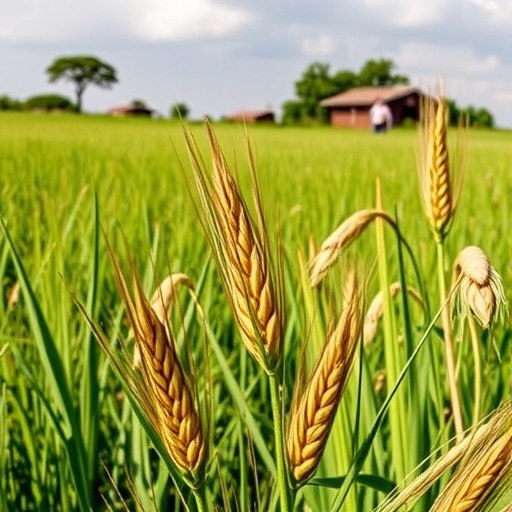Unraveling the Impact of Climate Change on Cereal Crop Production in East Africa
As the world grapples with the challenges posed by climate change, certain regions are feeling the acute impact more than others. The East African Community (EAC), a region that significantly relies on agriculture for both sustenance and economic stability, stands at a critical juncture. Recent studies, including the work by Musse, Echchabi, and Mohamud, provide an empirical assessment that brings to light how climate change is reshaping cereal crop production in this vital region.
Understanding the nuances of climate change effects on agriculture in East Africa requires a deep dive into the climatic patterns and agricultural practices that dominate the area. The region experiences a mixture of favorable agricultural conditions, juxtaposed with the realities of increasingly erratic weather patterns driven by climate change. The findings from empirical research not only emphasize the ongoing transformations but also challenge existing agricultural frameworks and policies.
The tale of East African agriculture is intertwined with the livelihoods of millions. Cereal crops such as maize, sorghum, and millet are staples in the diet of countless families and serve as primary sources of income for farmers across the region. Yet, the changes in temperature and precipitation patterns jeopardize both the yields and the economic stability of smallholder farmers who constitute the backbone of the agricultural sector.
One of the largest concerns highlighted in the study is the escalating temperatures that the EAC faces. According to the research, the average temperature across the region has been rising steadily, leading to heat stress on crops. Cereal plants, particularly maize, exhibit a decline in productivity as temperatures soar beyond optimal levels. This phenomenon is not just theoretical; empirical data demonstrate significant yield reductions correlating directly with said temperature increases.
Furthermore, variability in rainfall patterns adds another layer of complexity to cereal farming in East Africa. Traditional planting seasons have been disrupted as climate models predict more extreme weather events. This unpredictability presents risks not only for crop production but also for farmers’ planning and resource management strategies. The research suggests that revisions to planting calendars and irrigation practices are becoming increasingly necessary to mitigate these risks.
The empirical assessment undertaken by Musse and colleagues also brings to light the socioeconomic ramifications of climate-induced agricultural changes. Increased crop failure rates lead to economic instability for farmers who depend heavily on cereal production for their income and food security. This economic uncertainty can perpetuate cycles of poverty and elevate food insecurity, particularly in rural areas where alternative sources of income may be limited.
Moreover, the analysis identified resilience strategies being employed by farmers in response to these climatic changes. Adaptation techniques such as crop diversification, the adoption of climate-resistant varieties of cereals, and improved soil management practices are beginning to take root in some communities. These strategies are necessary not only to combat current challenges but also to prepare for future unpredictabilities posed by ongoing climate shifts.
As part of a broader sustainable agriculture approach, policy interventions must be explored and implemented at both regional and national levels. Policies supporting research on climate-resilient crop varieties, improved irrigation techniques, and farmer education programs must take center stage in addressing the impacts of climate change. Collaborative efforts among governments, NGOs, and the private sector could prove instrumental in revolutionizing the agricultural landscape in the East African Community.
While local adaptation measures are crucial, the reality of climate change calls for a more synchronized response involving international cooperation. Global strategic actions tailored towards developing climate-smart agriculture could support regions like East Africa in addressing their unique challenges. Climate finance, technology transfer, and capacity building must be prioritized to bolster local interventions and enhance agricultural resilience.
Public awareness and engagement are also vital in fostering a community-level understanding of sustainable practices. Educational initiatives that bring awareness to the effects of climate change and promote sustainable practices among farmers can catalyze transformative change. Building networks of farmers and extension services can facilitate information sharing and foster collaborative problem-solving efforts to tackle the agriculture sector’s challenges in the region.
Additionally, the role of technology and innovation cannot be overstated. The rise of digital agricultural technologies presents an opportunity for farmers to access real-time weather information, market trends, and helpful resources for improving yields. Embracing such innovations holds the potential to empower farmers and facilitate informed decision-making, essential in an era where climate conditions are rapidly evolving.
Meanwhile, the potential for climate change to exacerbate existing inequalities must be acknowledged. Vulnerable communities, including women and youth, are often hit hardest by climatic disruptions. Inclusive policies that take into account gender roles in agriculture and provide equal access to resources are necessary to ensure that adaptation and resilience efforts benefit all, rather than creating broader divides.
In conclusion, the empirical assessment of climate change’s effect on cereal crop production within the East African Community reveals a pressing need for comprehensive strategies that encompass adaptive practices, supportive policies, and community engagement. As the effects of climate change reverberate through agricultural systems, understanding and responding to these dynamics will be crucial for safeguarding the livelihoods of millions. Future research and continued monitoring will be essential in designing effective interventions that empower farmers and promote food security in the face of climate challenges.
By placing agriculture at the forefront of climate change discussions, we can advocate for a future in East Africa where sustainable practices prevail, ensuring that cereal crops can continue to thrive amidst the changes that lie ahead.
Subject of Research: Impact of climate change on cereal crop production in East Africa
Article Title: Empirical assessment of climate change effect on cereal crop production in the East African Community.
Article References:
Musse, O.S.H., Echchabi, A., Mohamud, I.H. et al. Empirical assessment of climate change effect on cereal crop production in the East African Community.
Discov Sustain 6, 1147 (2025). https://doi.org/10.1007/s43621-025-01998-w
Image Credits: AI Generated
DOI: 10.1007/s43621-025-01998-w
Keywords: Climate change, cereal crop production, East African Community, agricultural practices, resilience strategies, food security.




